
In recognition of November’s Native American Heritage Month, we’ve put together some of the top places in New York State to learn about the traditions, culture, and contributions of Native Americans. From wampum belts and hand-woven baskets to detailed clothing and authentic log cabins, you’ll discover the fascinating work of the state’s first inhabitants. With interactive exhibits, walking trails, and seasonal events, there’s much to be explored! Photo Credit: @heatherjordanlarson on Instagram.
Originally published: 11/06/2019
New York State Museum (Capital-Saratoga)
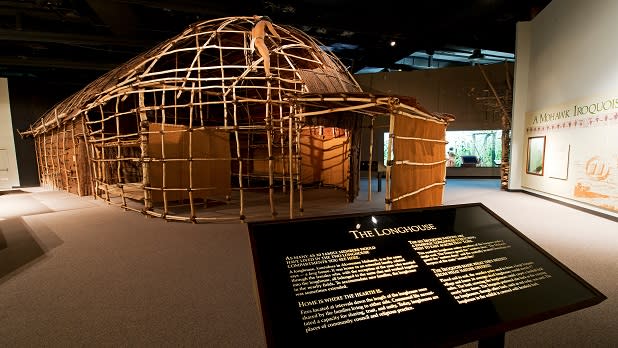
Walk through a reconstructed Mohawk Haudenosaunee (Iroquois) longhouse to see replicated artifacts and experience Iroquois culture as part of the ongoing First Peoples exhibit at the New York State Museum in Albany. The exhibit also includes three dioramas depicting the various ways of life of New York Native American tribes and a model of a Mohawk Iroquois Village. For a firsthand look at the impactful traditions and sense of community of Native People today, browse the Contemporary Native American Art Collection at the museum.
The museum is open Tuesday–Sunday from 9:30 am to 5 pm; Albany; Admission is free. The suggested donation is $5 per person and $10 per family.
Seneca-Iroquois National Museum (Chautauqua-Allegheny)
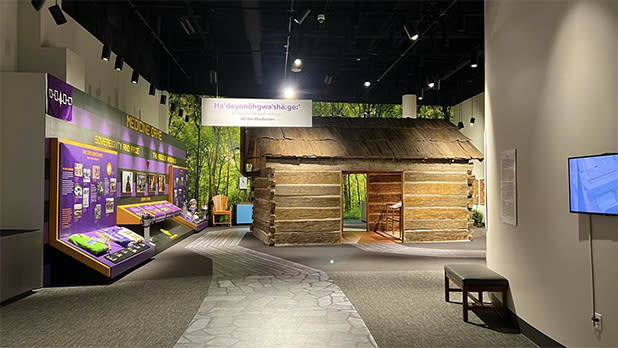 CREDIT: @DAMARISSTGO ON INSTAGRAM
CREDIT: @DAMARISSTGO ON INSTAGRAM
From distinct collections and guest speakers to memorable exhibits and special events, the Seneca-Iroquois National Museum, located in the Onöhsagwë:de’ Cultural Center in Salamanca, proudly showcases Seneca-Iroquois culture. Experience a traditional lifestyle as you wander through an authentic Seneca log cabin, learning the importance of lacrosse as a “medicine game” in the All the Medicines exhibit. Beadwork, basketry, pottery, and corn husk items are just some of the pieces available at the museum’s online store.
The museum is open Monday - Saturday 10 am–4:30 pm; Salamanca; Admission is $13 for adults, $10 for veterans, seniors, and college students, and $9 for children; Children six and under are free.
Iroquois Museum (Central New York)
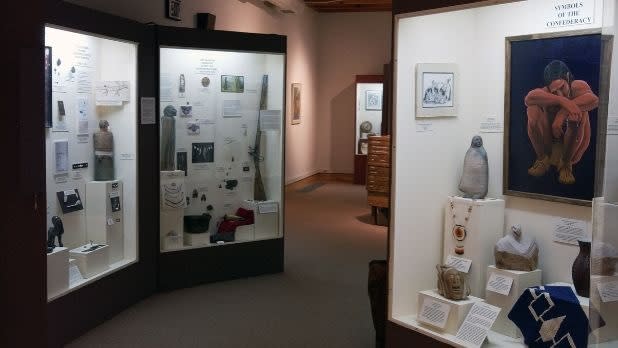
Honor Iroquois history and culture through art at the Iroquois Museum in Howes Cave. The museum, built to resemble an Iroquois elm bark longhouse, is an engaging center for learning for all ages. At the children’s area, youngsters can participate in interactive exhibits, including a kid-friendly extension of this year’s feature exhibition, Outside the Box. After exploring indoors, head outside to the 45-acre Nature Park with trails, wildlife, and two 19th-century log homes.
The museum is open May 1 - October 31 Tuesday-Saturday 10am-5pm and Sunday 12pm-5pm, and in April and November Thursday-Saturday 10am-4pm and Sundays 12pm-4pm; it will close November 30, 2024 and reopen on April 1, 2025. Howe Caves; Admission is $8 for adults; $6.50 for seniors age 62 and older; $6.50 for students age 13–17; $5 for children age 5–12; Children five and under are free.
National Museum of the American Indian (New York City)
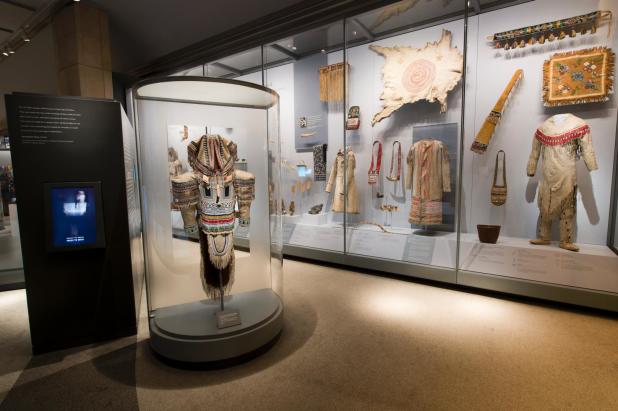
Showcasing the important work and traditions of Native Americans, the National Museum of the American Indian, a Smithsonian museum, is located within the stately Alexander Hamilton US Custom House at Bowling Green in Lower Manhattan. See how the work of 10 contemporary artists was influenced by their heritage at the ongoing Ancestral Connections exhibition. Find fun in the imagiNATIONS Activity Center where you can participate in hands-on activities, like balancing in a kayak or using Mayan Math. Also ongoing, Native New York encompasses 12 places in present-day New York, introducing visitors to the Native nations that call the region home. Stretching from Long Island through New York City and on toward Niagara Falls, it covers pre–Revolutionary War exchanges through contemporary events. Additionally, the permanent exhibit, Infinity of Nations: Art and History in the Collections of the National Museum of the American Indian, presents some 700 works of Native art from throughout North, Central, and South America and highlights the historic importance of many of these iconic pieces. Focal point objects, representing each region, range from an Apsáalooke (Crow) robe illustrated with warriors' exploits to an early Anishinaabe man's outfit complete with headdress, leggings, shirt, sash, and jewelry.
The museum is open daily 10am to 5 pm; closed on December 25. Manhattan; Admission is free.
Fenimore Art Museum (Central New York)
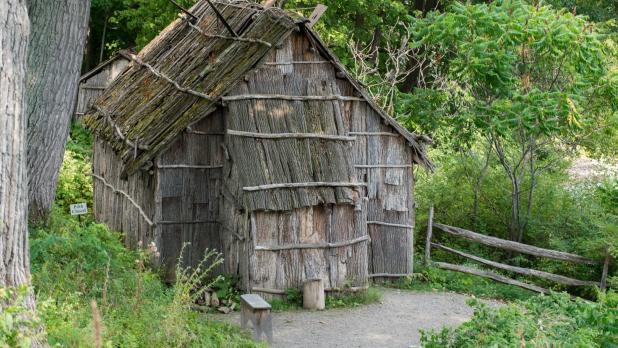
It’s no surprise that Cooperstown, a village filled with history and tradition, is home to an expansive Native American art collection. Located in the American Indian Wing of the Fenimore Art Museum, The Thaw Collection of American Indian Art features approximately 850 objects, including embellished moccasins, detailed jars, woven blankets, and beaded necklaces. Books about the Thaw Collection, as well as Native American history can be purchased at the museum shop. The lakeside grounds feature two Native American structures, a Seneca log house and a Mohawk bark house, that are open during the summer for special tours.
The museum is open April-December; hours vary by season. The museum is closed December 30-April 1.Cooperstown; Admission is $17.50 for adults; $12.50 for seniors; young people 19 and under are free; free admission is always available to members, active military, retired career military personnel, and for those receiving SNAP benefits, up to four people.
Ganondagan State Historic Site (Finger Lakes)
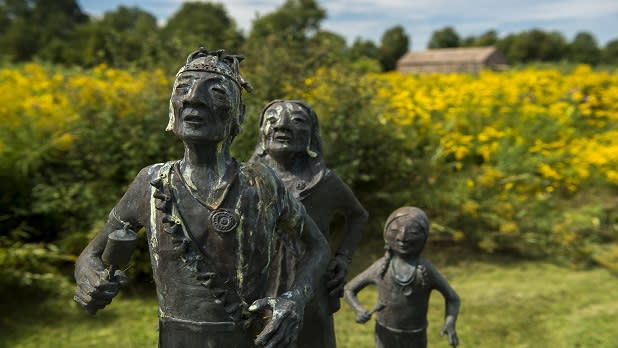
Go back in time at the Ganondagan State Historic Site, a National Historic Landmark and the original site of a 17th-century Seneca town, in Victor. The Seneca Art & Cultural Center, located at the Ganondagan State Historic Site, showcases the work and traditions of the Seneca and Haudenosaunee (Iroquois) people. This year's feature exhibit, Yöhso:s, connects the present to the ancient relationship that Haudenosaunee people have had with painting and takes a glimpse into the future of the medium through the works of six contemporary Haudenosaunee painters.
The cultural center is open Wednesday–Saturday 9 am–4 pm; the Bark Longhouse Exhibit is open until October 31. Year-round hiking trails are open daily dawn-dusk, weather permitting. Victor; Admission: November 1-April 30: $6 adults, $3 seniors, $1 children 5-11, $3 children 12–17 and college students; May 1–October 31: $8 adults, $4 seniors, and $2 children 5-11, $4 children 12-17, and college students. Free for children 4 and under, Friends of Ganondagan members, and Tribal Members with ID.
Akwesasne Cultural Center and Museum (Adirondacks)

Visit the Akwesasne Cultural Center and Museum in Akwesasne to learn about the culture of the Kanienʼkehá꞉ka (Mohawk). With new exhibits and a modernized look, the museum features images, artifacts, and interactive displays that make history come to life! One ongoing exhibit includes traditional black ash baskets, wampum belts, and a wolf belt, a traditional belt dating back to the 1700s. To incorporate contemporary work, the museum brings in local artisans to exhibit their work. Self-guided and guided tours are available. The Akwesasne Cultural Center also has a library providing literary resources for all ages, activities for families, and free internet access.
The library is open Mondays from 9 am to 5 pm, Tuesday-Friday 9am-6pm and Saturday from 10 am to 2 pm. The museum is open Tuesday–Friday from 10 am to 6 pm and Saturday from 10 am to 2 pm; Akwesasne; Donations are greatly appreciated.
The Wild Center (Adirondacks)
While you’re in the Adirondacks, head to The Wild Center in Tupper Lake to check out the Ways of Knowing project. In partnership with the Akwesasne Cultural Center, the Six Nations Iroquois Cultural Center, and the Native American Travelling College, the Ways of Knowing project includes the Haudenosaunee Thanksgiving Address exhibit and film. The exhibits feature the exploration of the natural world, traditional food, and work from artist David Fadden. Indigenous voices are also highlighted in Climate Solutions—an exhibit that highlights first-hand stories from local individuals working on local climate solutions.
Tupper Lake; open daily, from Memorial Day to Indigenous Peoples Day, from 10am–5pm; from Indigenous Peoples Day to March 30 and May 1 to Memorial Day, it is open Friday through Sunday, 10am–5pm; closed during April; admission price varies.
Garvies Point Museum & Preserve (Long Island)
Featuring collections of artifacts and Native American archaeology in exhibits, Garvies Point Museum & Preserve in Glen Cove provides a unique perspective on the early lives of Native Americans. Explore a variety of exhibits including The Seasonal Round that explores Native American life throughout the seasons on what now is Long Island. After exploring indoors, walk the 62 acres of nature trails along the preserve.
The museum is open Tuesday–Saturday 10 am–4 pm; The preserve is open seven days a week during daylight hours; Glen Cove; Admission is $5 for adults; $3 for children (ages 5–12).
For additional information about Native American history in New York State, visit the Path Through History website.
Don't forget to post photos of your New York adventures on Instagram and Twitter with #NYLovesFall and #iSpyNY and tag us on Facebook!
 NEWSLETTER
NEWSLETTER
